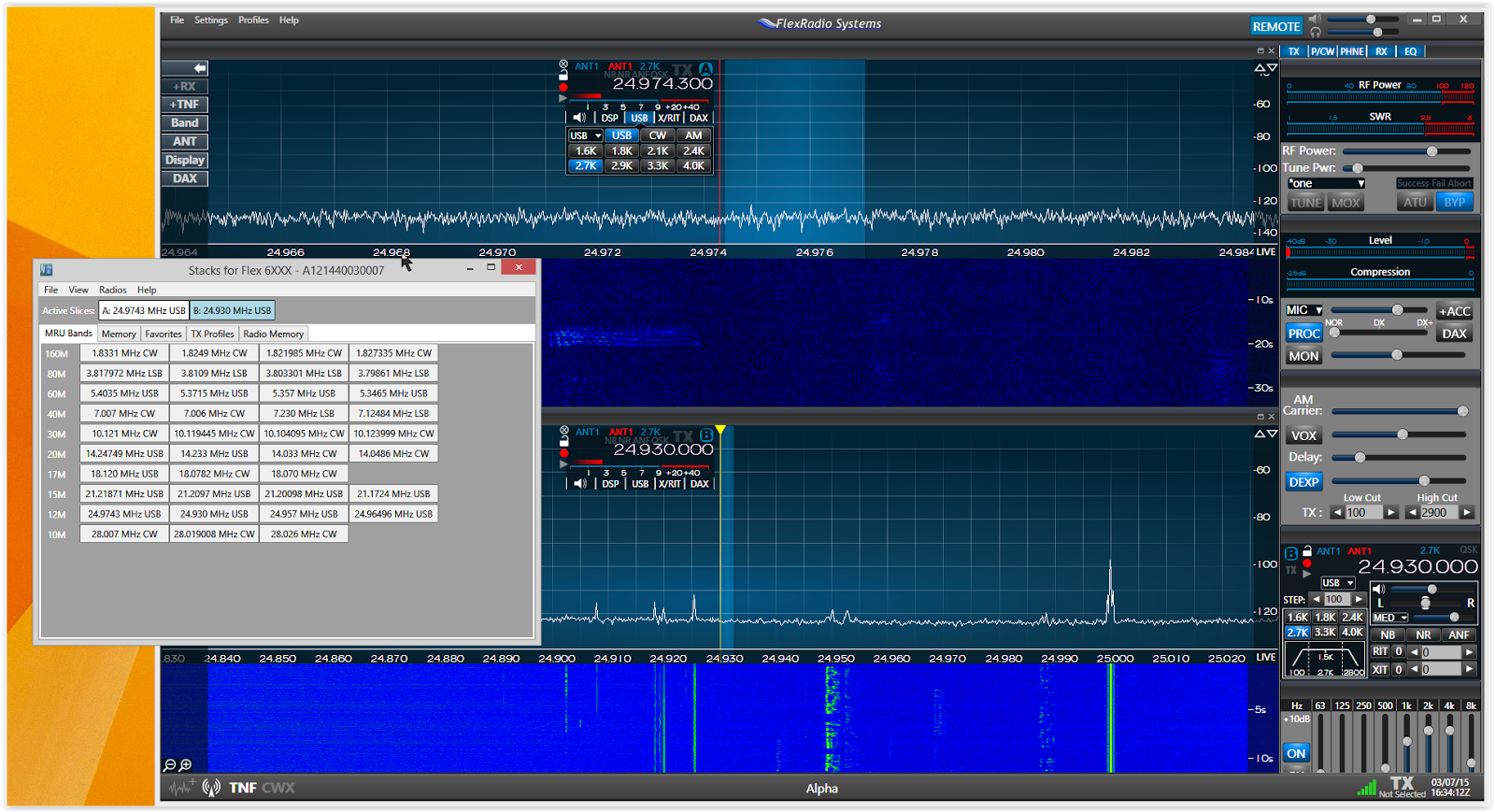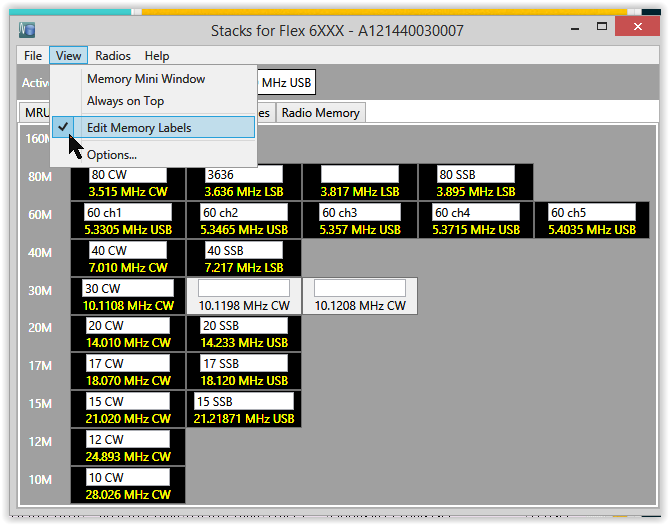Flex came up with a server/client model to be used with their radios and published a API so intrepid developers could access the radio via its API and therefore add features and functionality to the radio without Flex having to formally incorporate the idea in the actual hardware. The API is accessed under the server/client format over the ethernet so programs and utilities created can be resident on any computer connected to the radio whether it be the 'puter in the shack or the 'puter in the den or the 'puter (intranet) at the office over the internet. The intranet accessibility is soon to go live with V 1.4 and soon enough internet will follow.
Several clients have been written using this interface and are in use by thousands of Flex aficionados. DDUTIL v3 by my old buddy K5FR is an example of a very powerful program that interfaces the Flex with the rest of the station ie watt meter, amplifier, steppir antenna, macros, all kinds of things. Another program is SDR-Bridge by another old buddy W2RF. This program is a DX contest interface of sorts. It combines up to 4 channels of DXskimmer to 4 channels of DAX I/Q wideband audio, each being linked to a separate panadapter. Ed W2RF also has developed some specific split functions in SDR-Bridge which dramatically improves workflow when doing battle in a pileup. These are examples of the power of the Flex API.
Mark AA3RK wrote a piece of software that expands he capability of the memory system in the Flex called the FRStack. The FRStack talks to the radio via the API and stores the most recent frequencies to which the radio has been tuned, up to 4 recent band stack points are remembered.
This is a shot of my 6300's band stack database. Why is this useful? It allows you to have a record of recent freqs visited. For example if you are listening to a rag chew on 14.300 and a pileup on 14.230 you can flip back and forth between the 2 freqs just by clicking on the one you want. There is a way to shoot the stack memory into a panadapter of your choice.
In this shot I have 2 panadapters open. To send a stack memory to pan A I highlight pan A and click the stack memory I want sent there. In the above spot pan B is highlighted and I just sent 24.930 into its freq display.
The specifics of the radio setup is also remembered. Things like mode, filter bandwidth, antenna choice, DSP setting etc for each Stack point in the data base.
When I send 7.007 to a panadapter ALL of these parameters are transferred and configured. This is just the beginning. The band stacks are volatile. 4 freqs per band are remembered. When you tune to a freq the freq won't show up in the band stack for about 10 seconds. This avoids a constant flow of data from being remembered and only data for which you dwell on that freq for 10 seconds will be stored. 4 of these data points are stored and then its FIFO. So if you dwell on 10 freqs on a given band only the last 4 will be remembered. But you can put things into memory for long storage
This is my memory screen. The white blocks are long term memories of no special consequence. The actually are memories of a pileup I was stalking on 30M, one for VFO A one for VFO B. The program allows you to put labels on these long term memories either regular memories or favorites.
So if you are listening to 3 pileups you can label which pileup is which. I often do this if I am working on say 20M but waiting for a station to build on 40 or 80. If for example the station is in the Indian Ocean I can monitor the pileup in EU and listen to that build while I am waiting for my turn at propagation. I can often hear the propagation fire-up across EU starting in Russia then to Poland/Czech/Hungary, then France/Germany/Italy and Spain and finally England. I just click back once in a while and listen for what I can hear.
The other feature is favorites
Here you can designate certain freqs as virtually permanent because you use them all the time. I use this feature as a means to select either the CW or SSB portion of the band, and as a means to choose the 60M channels. If I was interested in digital that would be included here as well. Remember all of the channel info is stored so special choices you have to make like audio paths and input gains between a digi program and the Flex are remembered into a one press choice. There are more choices like transmit profiles which can be used to further refine choices and radio memory, which I think writes the memory actually into the radio for storage but I haven't really explored these options.
I keep FRStack tucked behind SSDR:
Ready for immediate access
It is an extremely versatile utility that exists on its own, does what it's supposed to do, causes no trouble in terms of affecting development, and does not take up any room in the FPGA. It is a good example of how Flex's insight in developing their API and server/client model can be leveraged by users to dramatically expand functionality. I like it!
73 W9OY







